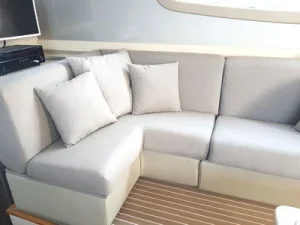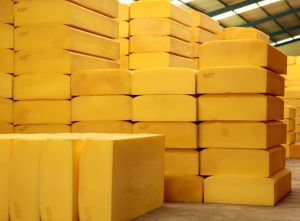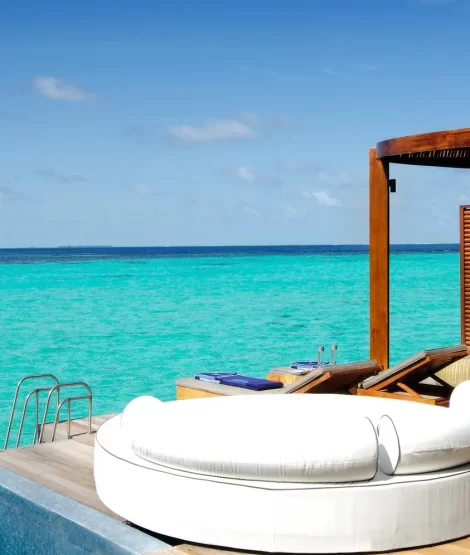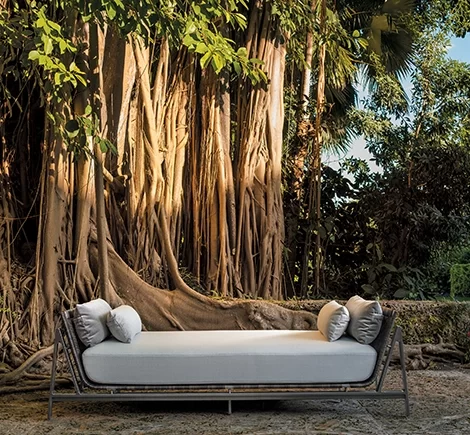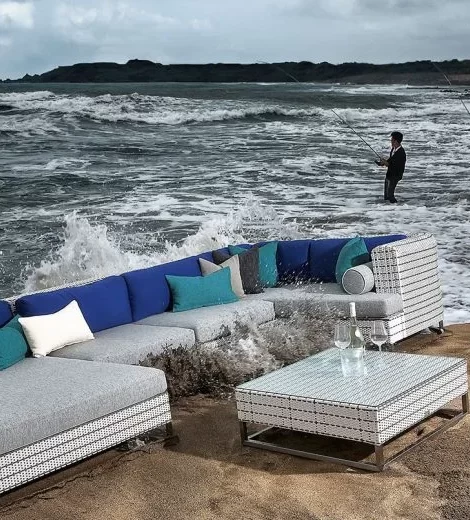Let’s face it—when it comes to relaxing outdoors, comfort is king. Whether it’s lounging on a patio, chilling on a balcony, or sunbathing by the pool, we all want that plush, cozy feel beneath us. That’s where foam blocks come into play. These unsung heroes are the core of outdoor furniture cushions, transforming simple seating into luxurious lounging.
In this article, we’re diving deep into how foam blocks are used in outdoor furniture cushion production, what types work best, and how to choose the right one to keep your outdoor vibes high and your maintenance low.
Portofolio Quickdryfoam
What Is a Foam Block and Why Does It Matter?
Think of a foam block as the heart of your cushion. It’s the core material that gives your seating its shape, support, and comfort. Without it, your outdoor furniture would be all fabric and no fluff—definitely not ideal for long afternoons outside.
But not all foam blocks are created equal. The type, density, and structure of the foam will determine whether your cushions last a season or several years. So if you’re in the business of making or upgrading outdoor cushions, understanding your foam is crucial.
Types of Foam Used in Outdoor Furniture Cushions
1. Polyurethane Foam
This is one of the most common types used in cushion production. It’s affordable and versatile, but not always the best for the outdoors unless it’s specially treated.
Pros: Lightweight, inexpensive, easy to cut.
Cons: Not water-resistant; needs a waterproof cover.
2. Open-Cell Foam
Open-cell foam is more breathable and allows water to pass through instead of retaining it—ideal for rainy climates.
Pros: Fast-drying, breathable, mildew-resistant.
Cons: Slightly less firm; needs proper fabric casing.
3. Closed-Cell Foam
This is the top-tier option for outdoor furniture. It repels water and allows quick drainage, making it perfect for outdoor use.
Pros: Drains fast, weatherproof, mold-resistant.
Cons: More expensive than standard foams.
4. Memory Foam (for Luxury Cushions)
Memory foam molds to your body, offering a luxurious feel. While it’s not typically used alone in outdoor cushions, it’s sometimes layered for added comfort.
Pros: Super comfy and supportive.
Cons: Traps moisture unless paired with water-resistant layers.
Why Foam Block Density Matters
Here’s a quick analogy: think of foam like bread. A fluffy loaf (low density) is soft but squishy and may not hold up. A hearty artisan loaf (high density)? Firm, supportive, and built to last.
For outdoor cushions, medium to high-density foam is your best bet. It provides a comfy yet durable seating experience and stands up to repeated use, sun exposure, and the occasional splash of rain.
Cutting and Shaping Foam Blocks

Once the foam type is selected, it’s time to cut it to shape. This part is like tailoring a custom suit—it needs to fit the cushion cover perfectly. Most manufacturers use electric foam cutters or hot wire tools to get precise cuts and smooth edges.
Depending on your furniture design, you can cut the foam into:
- Square/rectangle blocks for benches or seat cushions
- Rounded or contoured shapes for ergonomic backs or armrests
- Tapered edges for a sleeker, more refined look
Customization here is key, especially if you’re creating high-end outdoor furniture or offering custom orders.
Waterproofing and Protective Layers
Even the best foam will break down if exposed to the elements without protection. That’s why cushion production often includes waterproof liners or breathable mesh covers. These protect the foam while still allowing it to drain and dry.
Pro tip: For ultimate protection, wrap the foam block in a polyester batting before slipping it into the cushion cover. This adds softness and helps maintain the cushion’s shape.
Choosing the Right Foam for Your Project
Here are some quick questions to help you narrow it down:
- Is the furniture fully exposed to rain and sun? Go with closed-cell foam.
- Is comfort the top priority? Layer memory foam over a high-density polyurethane base.
- Need a budget option for covered patios? Treated polyurethane foam might be enough.
- Do you want long-term performance with low maintenance? Dryfast or reticulated foam is worth the investment.
Benefits of Using High-Quality Foam Blocks
- Better Comfort: The right foam makes your cushions more inviting.
- Longevity: Durable foam resists flattening and breaking down.
- Water Resistance: Especially important for outdoor exposure.
- Customization: Foam blocks can be cut to any shape or size.
- Improved Aesthetics: A well-formed cushion looks plush and polished.
Foam Block vs. Pre-Made Cushions: What’s Better?
While pre-made cushions are convenient, using foam blocks gives you full control over size, shape, and quality. Whether you’re a DIYer or a furniture manufacturer, foam blocks allow for custom-fit solutions that can elevate the entire look and feel of your outdoor setup.
Plus, foam blocks often end up being more cost-effective in the long run, especially when paired with high-quality covers and protective liners.
Conclusion: Foam Is the Secret Ingredient to Great Outdoor Cushions
At the end of the day, your outdoor cushions are only as good as the foam inside them. If you’re aiming for comfort, durability, and a cushion that can weather the storm (literally), investing in the right foam block is a no-brainer.
Whether you’re producing cushions for retail, upgrading your patio furniture, or taking on a DIY project, choose your foam wisely—it’s the foundation of outdoor comfort.
FAQs About Foam Block for Outdoor Furniture Cushion Production
1. What foam is best for outdoor furniture cushions?
Reticulated (open-cell) foam or closed-cell foam like Dryfast is ideal due to its quick-drying and mold-resistant properties.
2. Can I use regular foam for outdoor cushions?
You can, but it’s not recommended unless it’s treated or covered with a waterproof liner. Regular foam absorbs water and can develop mold.
3. How thick should outdoor cushion foam be?
Anywhere from 2 to 6 inches, depending on the use. Lounge chairs may need thicker foam for better comfort.
4. How do I waterproof my foam cushions?
Use a waterproof liner, choose quick-dry foam, and pair it with a weather-resistant fabric like Sunbrella for the cover.
5. How long does outdoor foam last?
High-quality outdoor foam can last 5–10 years with proper care and protection from the elements.


